This article has been reviewed according to Science X's editorial process and policies. Editors have highlighted the following attributes while ensuring the content's credibility:
fact-checked
reputable news agency
proofread
Poverty is killing the Amazon rainforest. Treating soil and farmers better can help save what's left
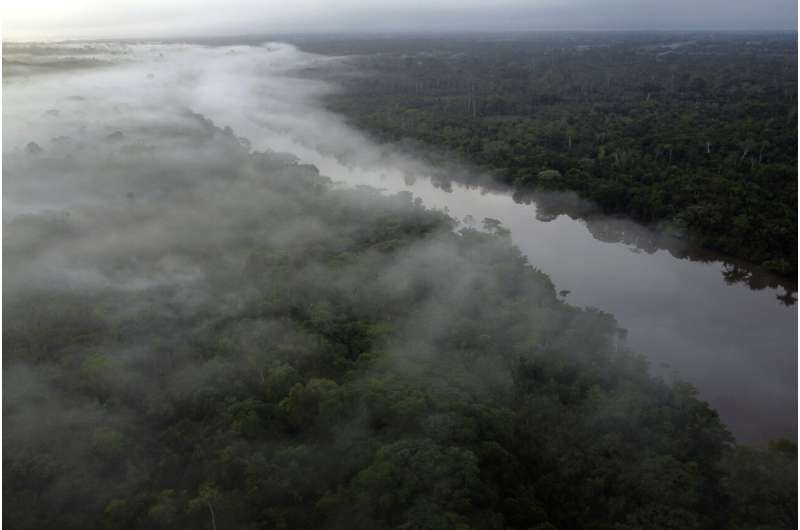
At dawn in this small Amazonian village in Brazil's Para state, flocks of noisy green parrots soar overhead as children run and play between wooden homes, kicking up sandy soil—in places white and bare as a beach.
The ground reveals one of the paradoxes of the rainforest.
Renowned for its beauty and biodiversity, the life-giving nutrients of the forest are mostly stored in the trees and other plants, not the soil.
When the forest is cleared—for a cattle ranch, soybean field or even a small cluster of village homes—the combination of scorching Amazonian sun and intense rainfall combine to leach scarce nutrients from the soil in just a few years, leaving behind surprisingly barren ground. Soil rich in organic matter is black, but here it's sometimes the color of bone. Some ecologists call it a "wet desert."
This impoverished dirt makes it difficult to sustain agriculture in one place.
And in a region with some of the highest poverty levels in Brazil, people with few options have often just abandoned degraded fields and cleared more forest—hastening the cycle of deforestation that threatens the planet's climate and the millions of species unique to the Amazon.
"The biodiversity is rich, but so many people are very poor," said Judson Ferreira Valentim, a soil scientist for the government's agricultural research agency, Embrapa. "We can't protect the rainforest without addressing the poverty of the Amazon."
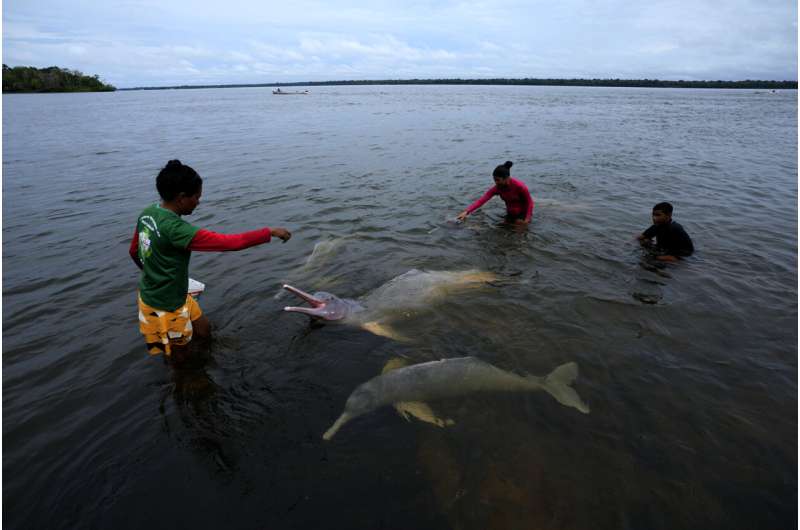
The only way to meet both goals is to find more paths for people to make a living in the Amazon without further destroying the rainforest, say experts who have long worked in the region. That means using already deforested land more efficiently—to reduce pressure to clear more forest—as well as supporting businesses that sustainably harvest native products such as açaí and cacao.
Valentim, who works in the northern state of Acre, where he's lived for four decades, points from the window of his truck to areas of abandoned farmland: some are patches of bare soil or red clay; some are overgrown with dark shrubby weeds.
The scale of abandoned farm and pastureland across the Brazilian Amazon is massive—covering an area larger than Portugal, according to an AP analysis of data derived from satellite imagery by the Brazilian research collaboration Mapbiomas.
Other researchers estimate that ranching, which accounts for between 60% and 80% of deforestation in the Brazilian Amazon, is only a third as productive as it should be, and that increasing the efficiency on the same land area would more than meet increasing demands for meat through 2040. Brazil is a major exporter of beef to global markets, and currently 43% of Brazil's cattle are raised within the Amazon region, according to an AP analysis of government data.
"You have to enforce laws against deforestation, but that's only part of the solution. You also have to give people alternatives" to improve their livelihoods, said Rachael Garrett, a researcher at Cambridge University who's conducted fieldwork in the Amazon since 2006.
There are 28 million people living in just Brazil's portion of the Amazon—including Indigenous farmers, ranchers who migrated from other parts of the country, and settlers forcibly relocated decades ago when the government took their old land for infrastructure projects like the Itaipú Dam.
"You can't ignore that millions of people are living there," Garrett said. "The more their needs are ignored, the worse some problems get."
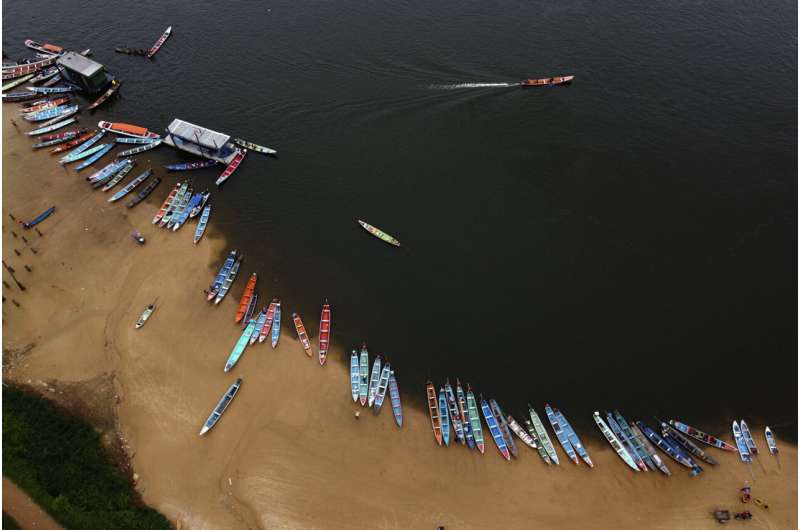
SUPERCHARGING THE SOIL
Nearly everyone in the Amazon starts work early, aiming to finish before the worst of the midday sun. Valentim is on the road at dawn to visit families who've tried new techniques to squeeze more production out of the soil.
Dairy farmer Edson Cesar de Oliveira waves from his porch. The son of a subsistence rubber tapper from Acre, his family lives in a small wooden home that he built himself.
Chickens cluck in the yard, and clothes flap on a laundry line. Cleonice Farina de Oliveira, his wife, offers black espresso and slices of homemade cheese to visitors.
For the past few years, the family has been experimenting with planting a native legume called forage peanuts alongside grass in their pastures. This plant attracts bacteria to its roots that can pull nitrogen from the air into the ground, essentially acting as a low-cost natural fertilizer.
While grass-only pastures may degrade in just two or three years, adding legumes may extend the soil's fertility to ten or more years. It's also higher in protein than grass alone, which helps livestock grow faster. And it's easier than grass alone on the cattle's digestive system, reducing their methane emissions.
De Oliveria, who said he can't afford chemical fertilizers, has noticed that pastures with forage peanuts don't turn as yellow during the dry season. And cows that graze there for at least two nights produce about 20% more milk, he said.
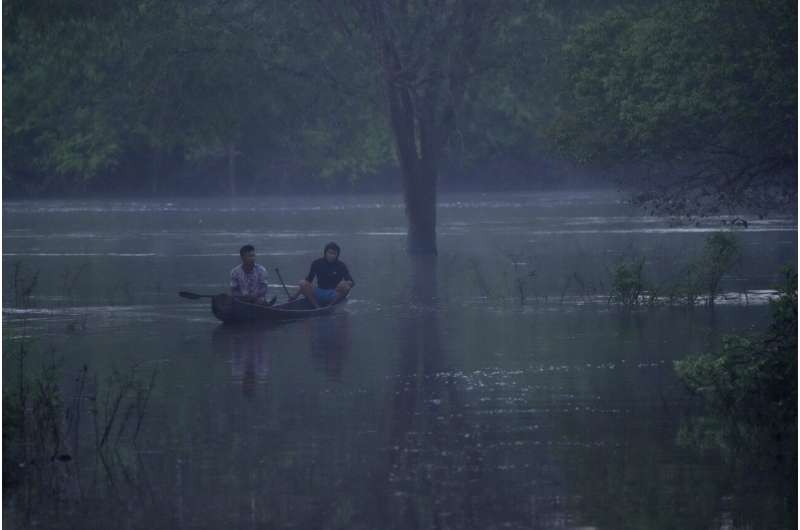
That increases the amount of cheese that the family can make to sell in local markets.
"We always sell out of our cheese," said Cleonice, as she pulled on rubber boots to go milk the cows.
After coaxing the first three animals into wooden pens, she, her husband and their 22-year-old son Thalisson each took a milking station. The family provides all the labor on their small farm.
On another day, Valentim visits a larger family ranch owned by Luiz Augusto Ribeiro do Valle. Do Valle said the last year he cleared new forest to expand the ranch was 2007. Now he's focused on improving productivity. In addition to planting forage peanuts in his pastures, he has changed the way he grazes cattle.
Holding up a detailed map of his ranch, he said, "You take a large pasture, divide it into smaller areas and rotate where the cattle graze." The goal is to keep cattle always feeding on new grass, while other areas regrow—the new growth is more nutritious and easier to digest.
Cows bray in the distance and dragonflies buzz at his feet as he strolls up a hill, periodically bending to inspect the grass. "You have to keep checking the plan against the reality on the ground," he said. By combining rotational grazing and forage peanuts, he said he can keep between 20% and 40% more cattle on the same amount of land.
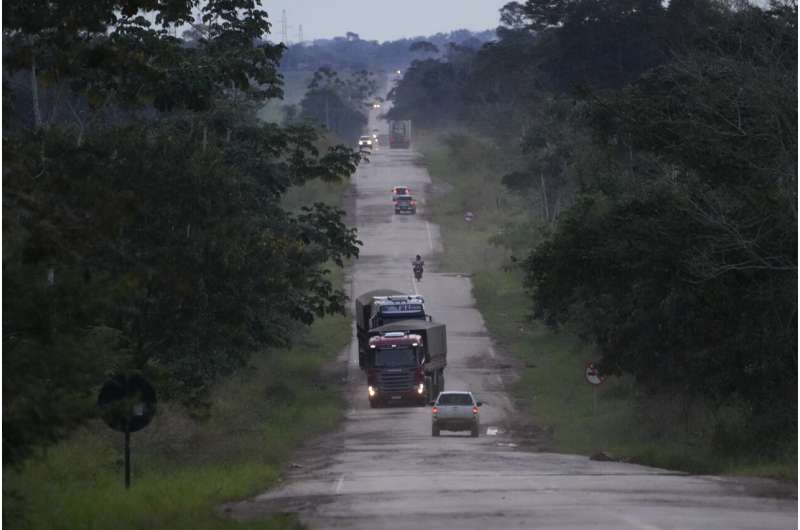
HARD REALITIES OF THE RAINFOREST
But even these simple innovations can be hard for some poor ranchers in the Amazon to implement.
In a region with poor roads and spotty internet and cell-phone service, it's hard to spread information about better farming practices.
Many small ranchers can't afford fertilizers, tractors and other modern farming supplies. And drug trafficking, illegal mining and violence also make it difficult to work on the Amazon frontier.
Of the nearly 1 million farms in Brazil's Amazon region, 83% are small family farms and ranches, according to government figures. Many operate on shoestring budgets.
As President Luiz Inácio Lula da Silva's government ramps up enforcement of environmental laws—reversing the policies of Jair Bolsonaro and so far curbing overall deforestation by 22%, according to Brazil's national space agency—some experts say it's small-scale ranchers and farmers that are still most at risk for clearing rainforest.
"When you have fewer choices, you take bigger risks," said René Poccard-Chapuis, an agronomist at the French agricultural research agency CIRAD who has worked in the region for three decades.
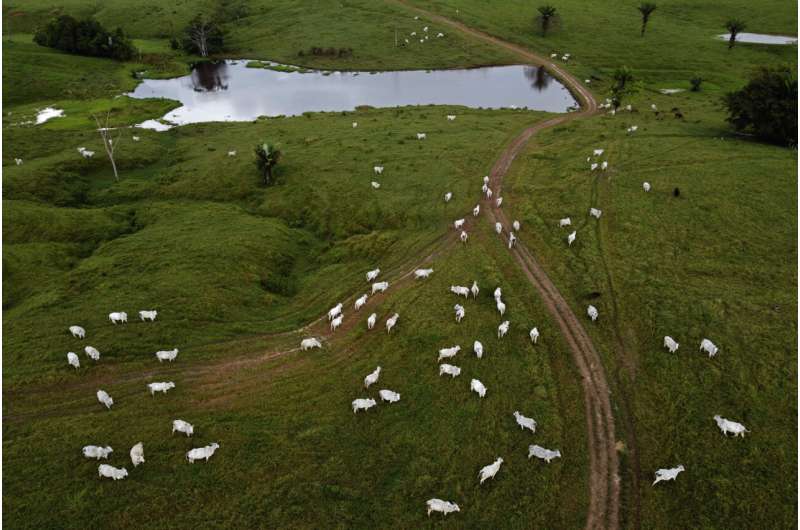
Like Valentim, he's focused on helping farmers and ranchers—especially small operators—find low-cost solutions to improve their livelihoods.
In Para state, in the eastern Amazon, Lucas dos Santos has a very modest ranch. He can't afford a horse to ride or hired labor, but moves the cattle between pastures himself, holding a cattle prod in one hand.
He said he was unable to afford the price of new fencing to start rotational grazing for his small herd of 22 cattle. Then CIRAD researchers showed him how to use branch clippings from native trees in place of commercial fence posts.
The clippings, taken from trees on his property, put out new roots quickly, so he only had to pay for wires—and can now rotate his cattle.
TASTES OF THE RAINFOREST: AÇAÍ AND CACAO
César De Mendes is trying to grow a business in the rainforest without cutting any trees at all.
Walking through the forest along a tributary of the Amazon in Pará, he points out bright yellow fruits that sprout, sometimes in pairs, from the middle of tree trunks.
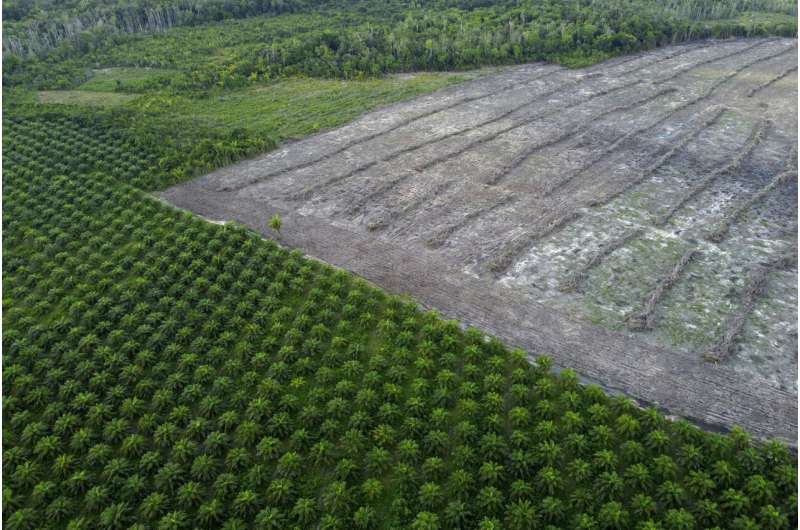
It's cacao, the plant responsible for one of the world's great joys: chocolate.
His company, De Mendes Chocolates, uses cacao harvested from virgin rainforest.
He's hoping customers will appreciate how different microclimates and soil conditions across the region subtly impact the flavor of the chocolate.
"You can taste the different environments," he said.
His small business sells mostly to upscale groceries and tourist shops. One of six employees at this location, Neilanny Maia, fulfills online orders by hand, devoting a room of her home to storing seed bags and finished chocolate bars.
The idea of harvesting rainforest fruits is simple, but scaling up a sustainable business isn't always easy.
Just getting fruit to market before it spoils can be a huge challenge. Last year during the rainy season, one road was closed for 90 days. One solution is to build small processing factories near the forest, as the longstanding agricultural collective Projeto RECA has done in Brazil's northern state of Rondônia.
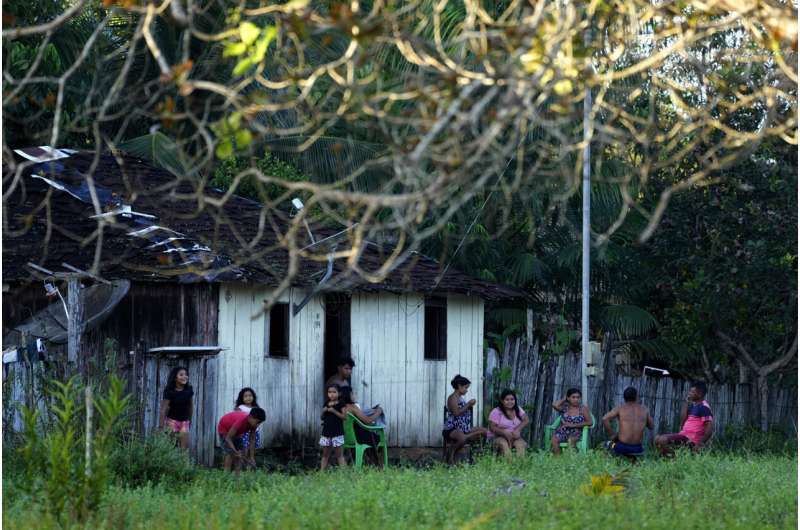
One afternoon, light breaks through the canopy of virgin rainforest as 37-year-old açaí picker Edson Polinario tilts his head backward, squinting, looking for promising trees.
Once he's chosen his target, he propels himself up the narrow palm trunk, using bands to grip the trunk securely.
With a stroke of his machete, he slices off a rack of açaí berries that resemble dark beads on a chandelier.
Then he slides down the trunk like it's a firepole.
Every day a worker comes to Polinario's house to collect bags of açaí, then hauls them back to Projeto RECA's campus on the back of a motorcycle.
Açaí berries spoil quickly and are practically worthless if not processed and frozen within two days.
At the factory, they're transformed into jams, syrups and frozen fruit pulp, ready to be shipped to supermarkets.
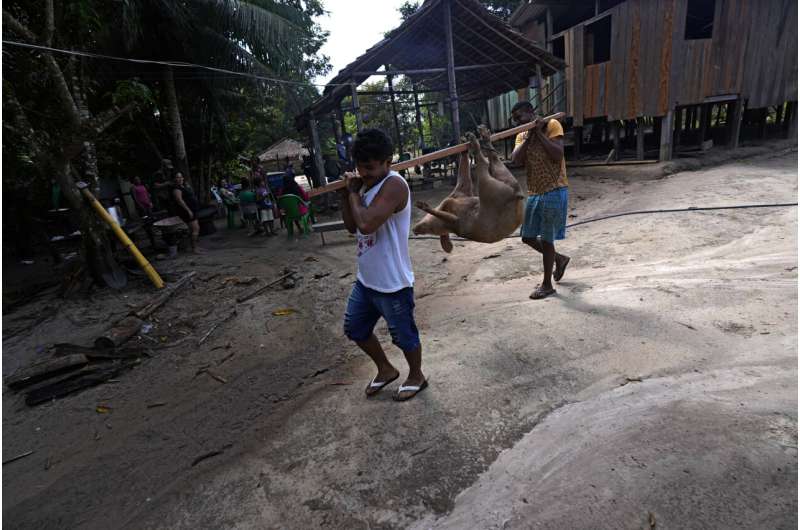
But there are other challenges to locating the business on the Amazon frontier. If factory equipment breaks, the team must dissemble it and drive parts several hours for repair. "We are too far from the big cities" for on-site maintenance, said Hamilton Condack de Oliveira, the president of the collective of about 200 households.
But still, they've managed to survive since the collective was founded in 1989.
They harvest from both virgin rainforest and agroforests planted on abandoned pastureland. Planting an agroforest—essentially a large orchard of mixed native tree species—doesn't aid biodiversity and climate as much as simply retaining old-growth forest, but it's much better than tending pasture or monoculture row crops.
"People will visit and say, 'Oh that's beautiful,' but it's a lot of work," he said.
'THE FOREST SUSTAINS US'
The impacts of climate change are already being felt locally in the Amazon region, forcing other adaptations.
For as long as their stories tell, the Indigenous Tembé people of Tekohaw village have used fire to clear small plots of land to grow cassava, beans and other subsistence crops. After farming for three years, they'd clear new land.
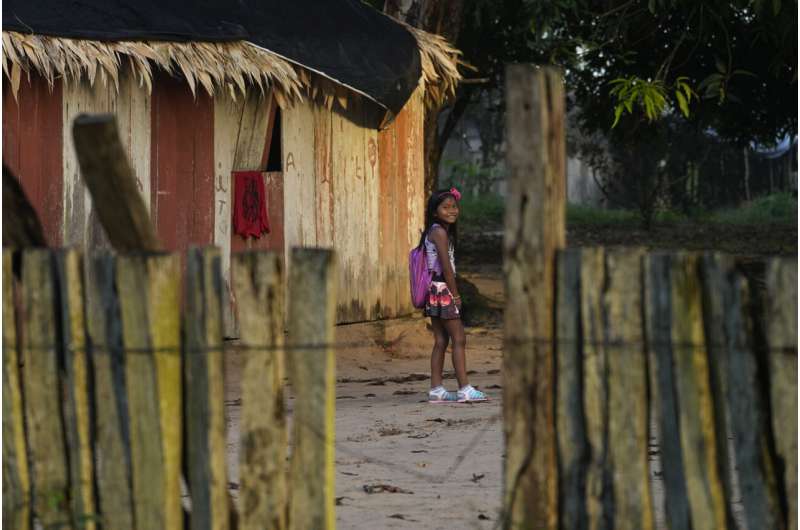
Because their plots were small, the overall impact on the forest was minimal. But now the village chief wants to find other ways to manage the soil's fertility.
"We don't want to use fire anymore in the forest because we can lose control of the fire, and it can burn the forest," said Kaparaí Tembé. This wasn't always as much of a risk, he said. But deforestation from ranching and soy farming for animal feed across the state of Pará has removed moisture from the air, and now the dry season has become longer and drier—heightening the risk of uncontrolled wildfires.
"We want to improve agriculture here, in one specific place, not keep burning fields and pushing nature back," he said, setting his hoe on the ground and mopping the sweat from his brow. "We need to nurture the soil."
Earlier this year, the villagers treated the field with a powder made from grinding up limestone . It's a technique to reduce the natural acidity of the Amazonian soil. Today Tembé and two other men are planting a different legume, called the pigeon pea, to add nitrogen to the soil.
Later, as he walked back to the village, Tembé heard the raucous shriek of a scarlet macaw.
"It's a reminder of where I am," he said. "The forest sustains us, the animals, the plants—we want to protect it."
© 2023 The Associated Press. All rights reserved. This material may not be published, broadcast, rewritten or redistributed without permission.





















